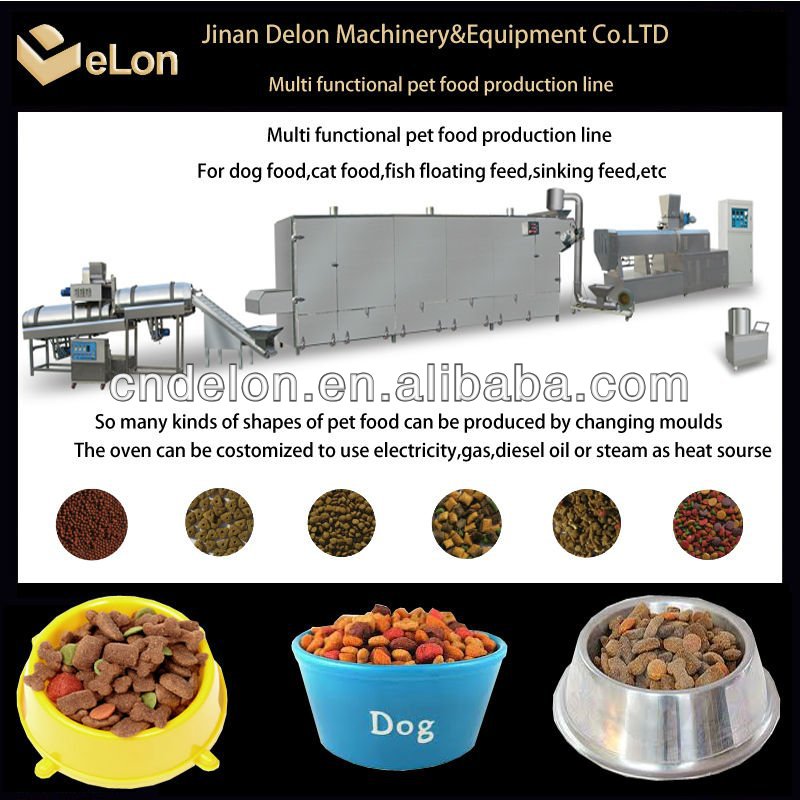We've discussed the lack of moisture in kibble and some of the associated problems, along with the fact that most nutrition is cooked out of the kibble and replaced with synthetic vitamins and minerals. Here's another reason to kick kibble to the curb.
Kibble is formed into nice little nuggets that are easy for pets to grab and swallow. Believe it or not, pet food companies spend a lot of time and money researching the exact shape and size of kibble that is preferable by each species. Apparently, cats really like small, flat, triangular or football shaped pieces. Who knew?
In order to get kibble to actually stick into a nicely shaped piece of food, it must have a glue to hold it together. That glue is a carbohydrate of some sort, so kibble is always going to be high in carbohydrates, usually averaging 40 to 60%. Unfortunately, the pet food companies don't make it easy for you to know how much carbohydrate is actually in the kibble because they are not required to list that on the bag. They list protein, fat, fiber, and moisture content. If you add these together and subtract from 100, you will get the approximate percent of carbohydrate in the food. Carbohydrates are less expensive than protein, so pet food manufacturers love to use more carbs.
Many people switch to grain-free kibble, thinking they are decreasing the carbohydrate load in the food. This is not true. Peas, potatoes, tapioca, sweet potatoes, chickpeas, and lentils are all carbohydrates.
Plants contain phytoestrogens, which are plant-derived, non-steroidal compounds possessing estrogenic activity. This can be problematic for pets with endocrine diseases, like hypothyroidism or Cushing's disease. A 2009 study showed data suggesting long-term ingestion of soy phytoestrogens may influence endocrine function in dogs and this could potentially impact results of studies evaluating endocrine function in dogs. We have to wonder if the high carbohydrate diets currently being fed are contributing to the increase in the number of dogs diagnosed with endocrine disease.
Cats are obligate carnivores and would only eat about 5% carbohydrates in their natural diet. Dogs can eat more carbohydrates than cats, but are still designed to be meat eaters. Excess carbohydrate consumption can lead to chronic inflammatory conditions like diabetes, obesity, arthritis, and inflammatory bowel disease. While an excess of carbohydrates, fats, or proteins can all lead to obesity, carbohydrates are basically a form of sugar. Carbohydrates are broken down in the body to form glucose. Obesity occurs when an animal's energy needs are exceeded; the extra glucose created by the digestion of the carbohydrates is stored as fat.
Glucose can only be used as an energy source when the body releases insulin from the pancreas to move the glucose out of the blood and into the cells. When a pet eats a high carbohydrate meal, insulin is released. High carbohydrate diets stress the pancreas due to constant stimulation to produce insulin. This can lead to chronic pancreatitis, which is especially problematic in cats. Chronic pancreatitis can be further complicated by diabetes and hepatic lipidosis (fatty liver syndrome).
Digestion of carbohydrates requires enzymes produced by the pancreas. If an animal has a deficiency of these enzymes, the carbohydrates will ferment in the bowel, leading to bacterial overgrowth and inflammatory bowel disease. Cats have decreased ability to utilize carbohydrates due to the lack of specific enzymatic pathways that are present in other mammals, and they lack a salivary enzyme called amylase. Both dogs and cats lack cellulase, which is an enzyme used to break down plant fibers. Inflammatory bowel disease is a very common diagnosis in veterinary practice and is extremely frustrating for pet owners. I have cured almost all the cases I have seen by switching the pets to a raw diet with supplemented digestive enzymes and B vitamins.
Urine pH will also change based on diet. Pets eating high meat diets tend to make urine with a slighter lower pH, around 6.0 to 6.5. This is the ideal pH to inhibit urinary tract infection and stone formation. Pets fed grain based diets will make a more alkaline pH, above 7.5, which allows bacteria to grow more readily. Bacterial infections cause bleeding and pain in the bladder and predispose the pet to forming stones in the bladder. For pets with chronically high urine pH, cranberry supplements may be beneficial. As already discussed in a previous blog, pets with a history of urinary stones should be fed a high moisture species appropriate diet.
If you'd like to learn more about keeping your pets naturally healthy and feeding a diet specific to your pet's health, check out these books and courses on DrJudyU.
Disclaimer: This content is for informational purposes only and is not meant to diagnose, treat, or replace consulting a primary veterinarian for individualized care.

